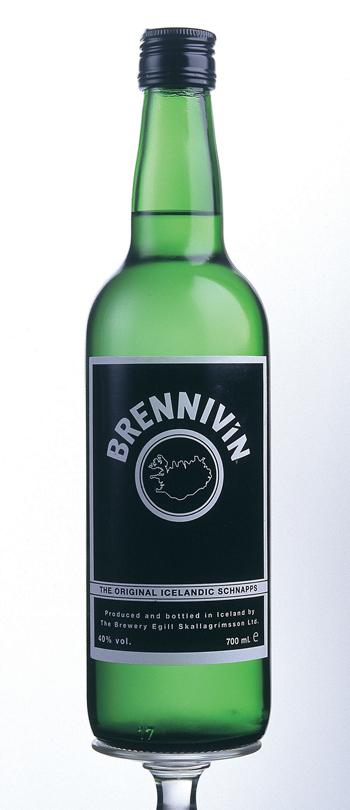Cocktail of the Week: Iceland’s pungent ‘black death,’ Brennivin
By • May 3, 2012 0 7838

While most travelers are familiar with the many specialty foods of Europe, many of these same countries also make their own specialty liqueurs.
In Italy, the spirits selection is as varied as its amazing cuisine. If you happen to find yourself in the birthplace of spaghetti, make sure you save some room for Sambucca, Limoncello or Aperol. In Greece, the anise-favored Ouzo is considered a symbol of Greek culture. And in Scandinavian countries, the locals enjoy Aquavit a spiced liqueur whose name is derived from the Latin “aqua vitae,” meaning “water of life.” Sampling these local elixirs during your vacation can be as much fun and culturally invigorating as enjoying a dinner of local fare.
During a recent trip to Iceland, I was excited about trying the local spirit: Brennivin, a type of schnapps made from fermented potato mash and flavored with caraway seeds. The name Brennivin, which literally translates into English as “burning wine,” is also known locally as “black death.” With a name like that how could one not be intrigued? Before landing in the capital city of Reykjavik, I envisioned Iceland as a land of hard-drinking Vikings staving off the frigid climate with loads of alcohol. I had read about the legendary nightlife in Reykjavik, a city where the darkness can last up to 20 hours in the dead of winter.
Even though my hotel was situated on Laugavegur Street, Reykjavik’s main party-strip, I decided to get into the spirit of Vikings before trying my first taste of Brennivin. I headed to the Vikingarain restaurant, a themed eatery that also features skits based on Icelandic history. Visitors enter the restaurant through a primitive fort-like wooden gate. Inside, the rooms are covered with rough pieces of raw wood, candlelight, bones and animals skins draped over the rustic tables and chairs. As servers greet you in traditional clothing, you are transported back 1,000 years in time.
The restaurant boasts that it presents the same food cooked and served in the same style as the Vikings ate. While I was eagerly looking forward to ordering a whale steak, I was curious to drink what the Vikings drank. While I had pictures in my head of Vikings carousing with giant steins of brewski, my bartender explained that they actually drank mead, a honey wine.
While modern Iceland is known for nightlife, the country has had a temperance tradition since the early 1900s. Prohibition was enforced 1915 through 1921 for wine and until 1935 for alcohol. Surprisingly, beer was prohibited until 1989. According to my bartender, on the first day that beer was legalized, more than 350,000 bottles were sold — more than the entire population of Iceland.
It turns out that Brennivin’s lethal nickname stems from the temperance movement. In an effort to scare consumers, the Icelandic government placed a skull and crossbones logo on all liquor bottles. With its stark black label and skeleton, Brennivin became known as “black death.” Today, the label sports an outline map of Iceland in lieu of a skull. Undeterred by the propaganda, I asked my bartender for a shot of Brennivin which he suggested washing down with a cold beer. The liqueur had a bold and pungent taste, heavy on the caraway, almost like drinking a slice of liquid rye bread. As my taste buds were processing this sharp flavor, my bartender explained that traditionally Brennivin was served with dried fish — specifically Hakral, a putrefied shark — in an effort to stave off an even stronger taste.
Brennivin today is mostly enjoyed as a patriotic drink, most notably on St. Thorlac’s Day (December 23), a holiday that honors the patron saint of Iceland. It’s a popular souvenir sampled then brought home by Iceland’s growing number of tourists. Although it’s not currently imported into Washington, Brennivin can be purchased online at NordicStore.com.

